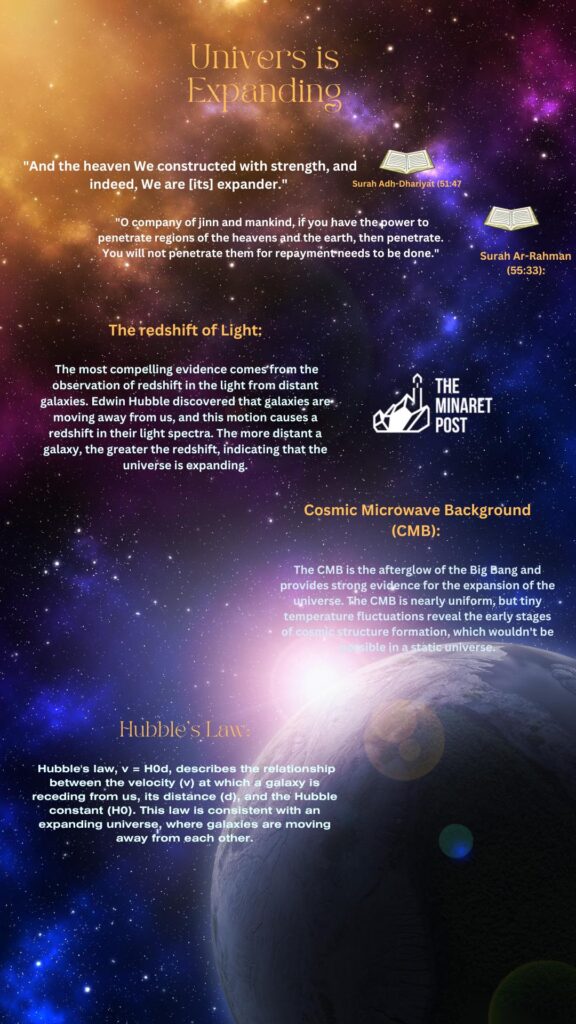
Current scientific understanding, the universe is expanding. This concept is a fundamental pillar of modern cosmology and is supported by extensive observational evidence. The idea of an expanding universe was first proposed by the Belgian astronomer Georges Lemaître in the early 20th century and was later confirmed by the observations of American astronomer Edwin Hubble.
Key pieces of evidence for the expanding universe include:
- Hubble’s Law: Edwin Hubble’s observations of distant galaxies revealed that they were moving away from us, and the speed at which they were receding was proportional to their distance from Earth. This relationship is known as Hubble’s Law and is a strong indicator of the universe’s expansion.
- Cosmic Microwave Background (CMB): The discovery of the Cosmic Microwave Background radiation, which is a faint, uniform glow of microwave radiation filling the universe, provides additional evidence for the expansion. The CMB is interpreted as the afterglow of the Big Bang, and its temperature variations across the sky support the idea of cosmic expansion.
- Redshift of Galaxies: When astronomers observe distant galaxies, they often see a redshift in their light spectra. This redshift is caused by the Doppler effect, which occurs as these galaxies move away from us, stretching the wavelengths of their emitted light.
- Large-Scale Structure: The distribution of galaxies and galaxy clusters in the universe also supports the idea of expansion. The way galaxies are distributed on the largest scales is consistent with an expanding universe.
The prevailing cosmological model, known as the Big Bang theory, describes the universe as having originated from a hot and dense state approximately 13.8 billion years ago. Since then, the universe has been expanding, and this expansion is ongoing.
It’s important to note that the concept of an expanding universe is a scientific theory supported by substantial evidence and widely accepted within the scientific community. It has revolutionized our understanding of the cosmos and remains a central topic of research in astronomy and astrophysics.
